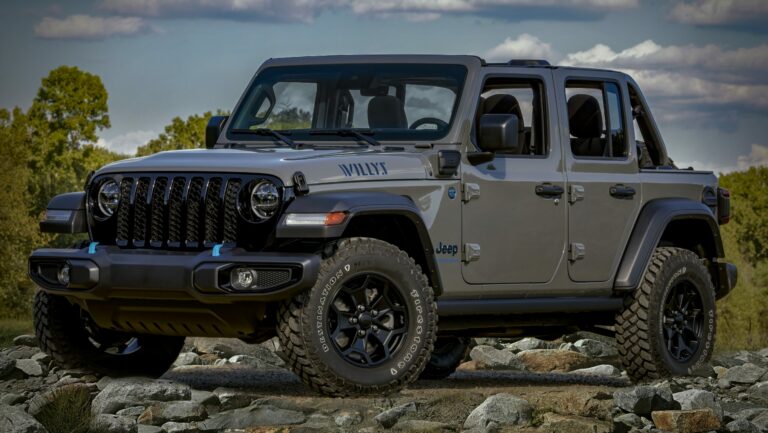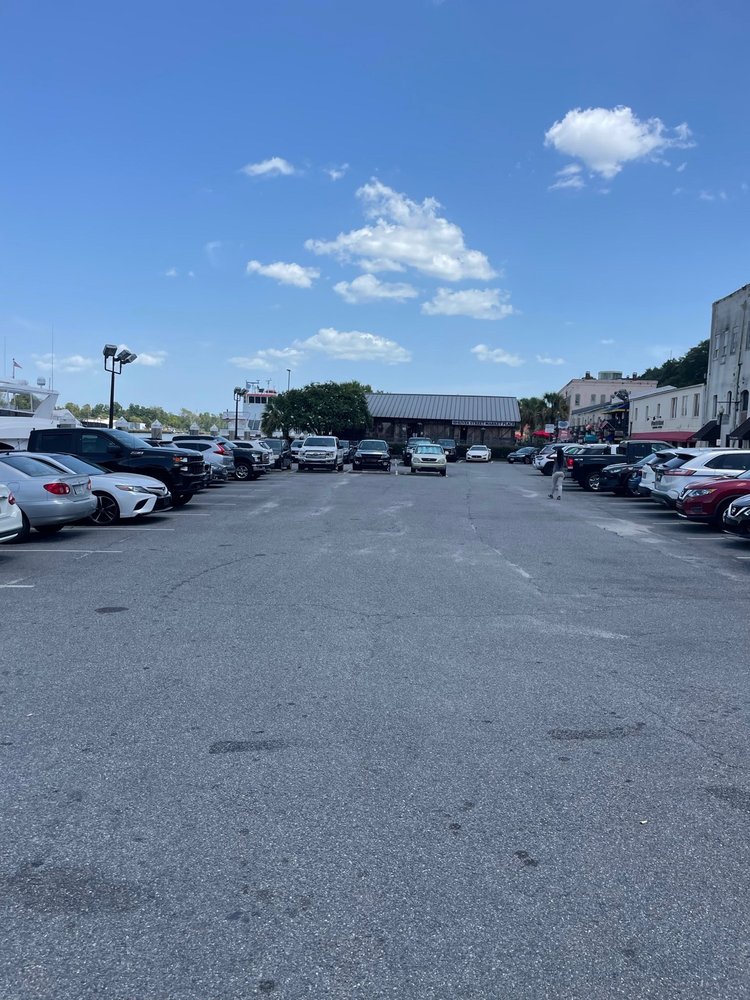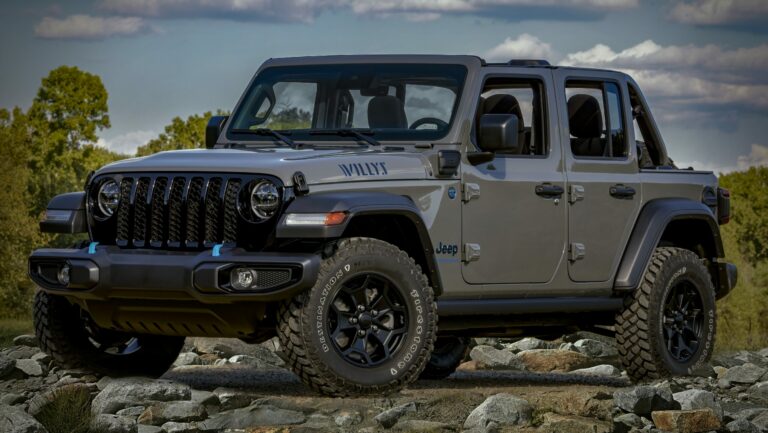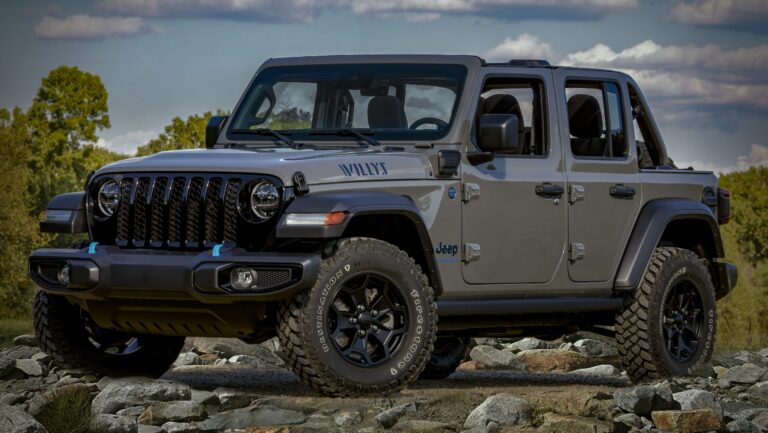1950 Willys Jeep For Sale: Your Guide to Owning an Automotive Icon
1950 Willys Jeep For Sale: Your Guide to Owning an Automotive Icon jeeps.truckstrend.com
An Enduring Legacy: More Than Just a Vehicle
The year 1950 stands as a significant point in the evolution of the civilian Jeep, representing the heart of the CJ-3A model’s production run. For enthusiasts, collectors, and those yearning for a tangible piece of American automotive history, the prospect of a "1950 Willys Jeep For Sale" is far more than a simple transaction; it’s an invitation to own an icon. These rugged, no-nonsense vehicles are direct descendants of the legendary WWII military Jeeps, transitioning from battlefield heroes to indispensable tools for farmers, adventurers, and everyday citizens. Their enduring appeal lies in their simplicity, robust design, unparalleled off-road capability (for their era), and the undeniable charm of their utilitarian aesthetic.
1950 Willys Jeep For Sale: Your Guide to Owning an Automotive Icon
Owning a 1950 Willys Jeep isn’t just about having a classic car; it’s about embracing a lifestyle. It’s about the satisfaction of working on a machine that’s fundamentally understandable, the joy of turning heads wherever you go, and the connection to a bygone era of American ingenuity. This comprehensive guide aims to equip you with the knowledge needed to navigate the market, understand the nuances of the 1950 Willys Jeep, and make an informed decision on your journey to acquiring this timeless piece of machinery.
Understanding the 1950 Willys Jeep (CJ-3A): Key Features and Specifications
The 1950 Willys Jeep belongs to the CJ-3A series, which was produced from 1949 to 1953. Building upon the success of its predecessor, the CJ-2A, the CJ-3A refined the civilian Jeep concept for improved comfort and utility. While retaining the iconic flat-fender design, it introduced key updates that make it a distinct and desirable model.
At its core, the 1950 Willys Jeep is powered by the legendary "Go-Devil" L-134 flathead four-cylinder engine. This robust powerplant, renowned for its reliability and torque, delivered around 60 horsepower and 105 lb-ft of torque, perfectly suited for its low-speed, high-traction applications. Mated to the engine was typically a T-90 3-speed manual transmission, connected to a Spicer 18 transfer case that allowed for two-wheel drive high, four-wheel drive high, and four-wheel drive low ranges. Power was distributed to Dana 25 front and Dana 41 or 44 rear axles, providing the legendary off-road capability Jeeps are known for.
Visually, the CJ-3A is most easily identified by its one-piece windshield, which replaced the split windshield of the CJ-2A, offering improved visibility. It also featured slightly more comfortable seating and often came with an optional power take-off (PTO) unit, allowing it to power farm implements, further cementing its role as a versatile utility vehicle. Its rugged leaf spring suspension and basic, yet effective, braking system underscore its utilitarian design.
Navigating the Market: Where to Find a 1950 Willys Jeep For Sale
Finding a 1950 Willys Jeep for sale requires a targeted approach, as these are niche vehicles not typically found on mainstream car lots. Here are the most effective avenues:
- Online Marketplaces & Auction Sites: Websites like eBay Motors, Bring a Trailer, and specialized classic car auction sites (e.g., Mecum, Barrett-Jackson for higher-end restorations) are excellent starting points. Craigslist and Facebook Marketplace can also yield local finds, though often requiring more careful vetting.
- Specialized Forums & Communities: Dedicated Willys Jeep forums (e.g., The CJ2A Page forums, G503.com for military and early civilian Jeeps) are invaluable resources. Members often post vehicles for sale, and the community can provide insights and advice.
- Classic Car Dealers & Brokers: Some dealers specialize in vintage 4x4s and may have a Willys in stock or can help source one. These often come with a higher price tag but potentially more assurance regarding condition.
- Word-of-Mouth & Local Networks: Attending local classic car shows, swap meets, or even placing "wanted" ads in rural areas can uncover hidden gems. Many older Jeeps are still tucked away in barns or garages.
- Auctions & Estate Sales: Keep an eye on local auction listings, as older vehicles often surface during estate sales or farm equipment auctions.
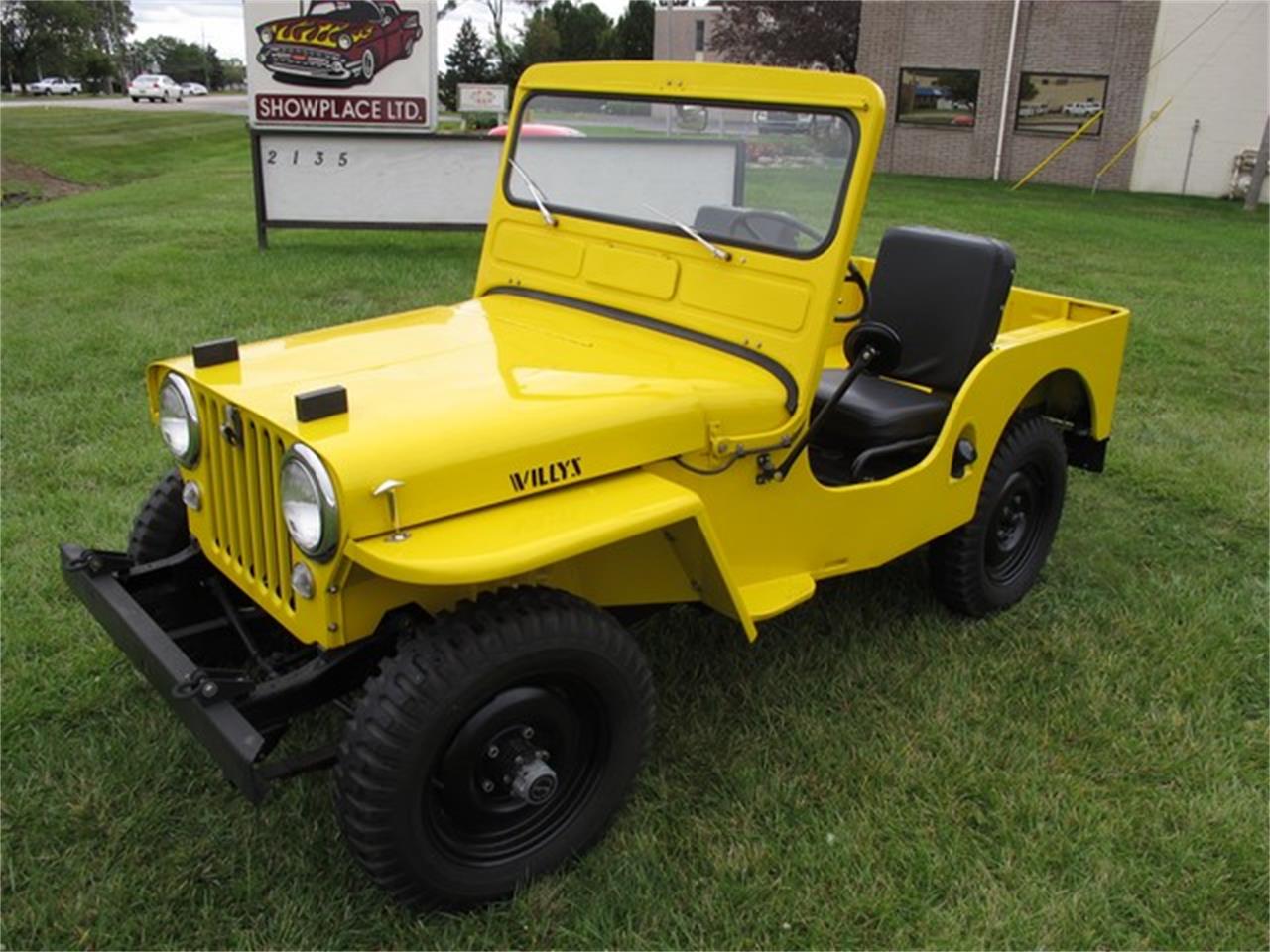
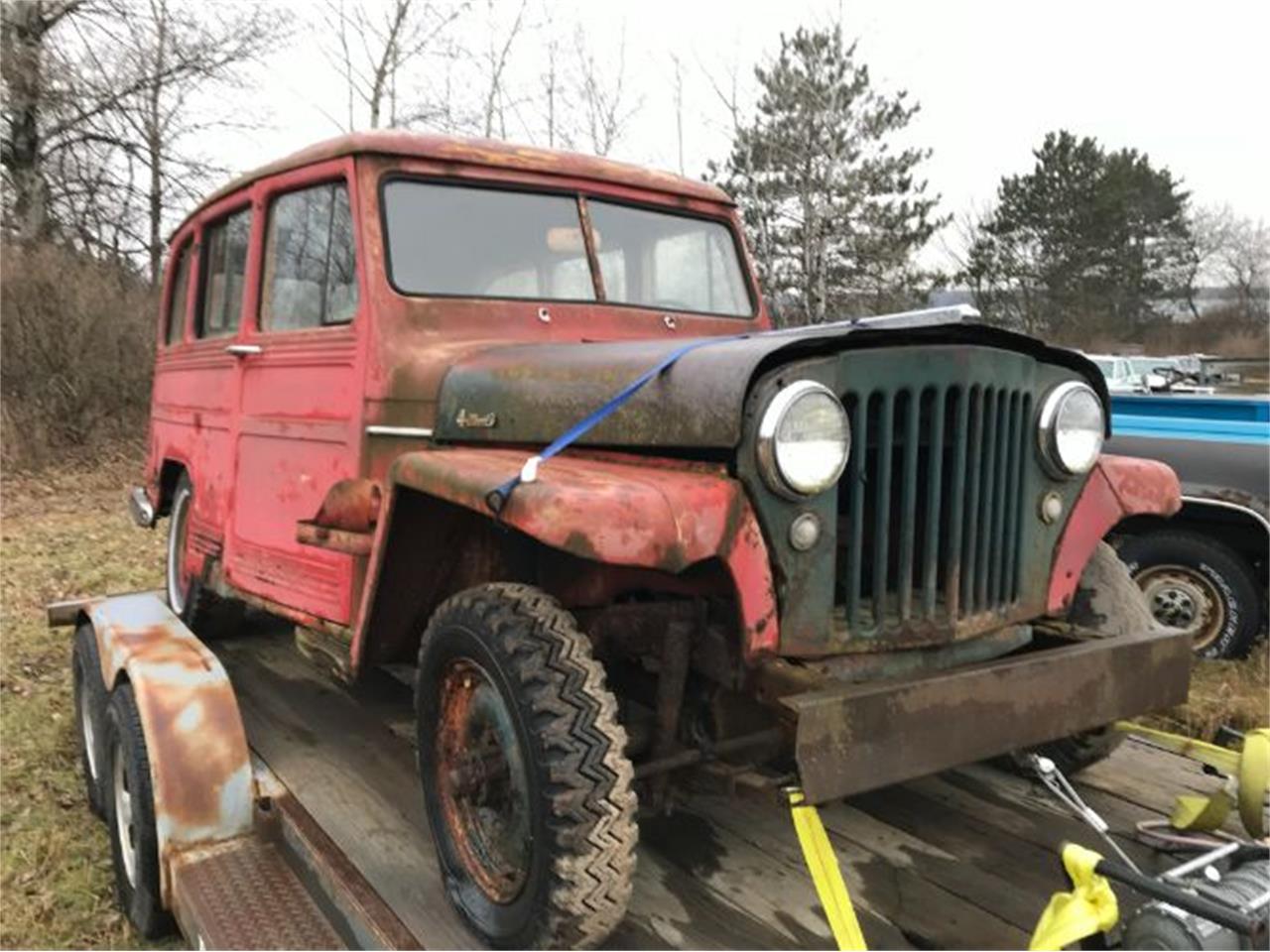
Regardless of where you find a potential Jeep, always prioritize thorough research and, whenever possible, an in-person inspection.
What to Look For: Essential Inspection Points When Buying
Buying a vintage vehicle like a 1950 Willys Jeep is an investment that requires careful scrutiny. Here’s a checklist of critical areas to inspect:
- Frame Integrity: This is paramount. Look for rust, especially near spring hangers, body mounts, and crossmembers. Check for any signs of bending, cracks, or poor welding repairs from accidents. A compromised frame is a deal-breaker or a very expensive fix.
- Body Rust: Willys Jeeps are notorious for rust. Pay close attention to the floorboards, hat channels (underneath the floor), cowl, fenders, and the tool box area under the passenger seat. Minor surface rust is manageable, but extensive perforation indicates a major restoration project. Check for excessive Bondo or poor patch panel work.
- Engine & Drivetrain:
- Engine (L-134 Go-Devil): Look for oil leaks, check the oil color, and listen for knocking or unusual noises. A compression test is highly recommended. Ensure it starts easily and idles smoothly.
- Transmission (T-90): Shift through all gears (if possible) to check for grinding or difficulty engaging. Listen for excessive noise.
- Transfer Case (Spicer 18): Check for leaks and ensure it shifts into 2WD high, 4WD high, and 4WD low smoothly.
- Axles (Dana 25/41/44): Look for leaks at the differential covers and wheel ends. Check for excessive play in the universal joints and wheel bearings.
- Steering & Suspension: Inspect the steering box for leaks and excessive play in the steering wheel. Check leaf springs for sagging or broken leaves. Examine shackle bushings for wear.
- Brakes: These are typically drum brakes. Check for fluid leaks, pedal feel (spongy indicates air or issues), and overall stopping power. Assume they will need an overhaul unless proven otherwise.
- Electrical System: Many older Jeeps have been converted from 6-volt to 12-volt systems. Ensure all lights, gauges, and accessories are functional. Look for shoddy wiring, which can be a fire hazard.
- Documentation: Verify the VIN number matches the title. A clear, transferable title is essential. Any historical service records or provenance are a bonus.
- Originality vs. Modification: Decide what you want. A highly original Jeep will command a premium. Modified Jeeps (e.g., engine swaps, power steering/brakes) can be more practical for driving but may deter purists.

Pricing Your Dream Jeep: Factors Influencing Value
The price of a 1950 Willys Jeep varies dramatically based on several critical factors. It’s not uncommon to see prices range from a few thousand dollars to well over fifty thousand.
- Overall Condition: This is the most significant factor. A non-running "parts Jeep" with significant rust will be at the bottom of the scale, while a fully restored, show-quality vehicle will be at the top.
- Originality: "Numbers matching" engines and correct period components add significant value, especially to collectors.
- Completeness: Missing major components (engine, transmission, axles) or unique period accessories (PTO unit, heater) will reduce value due to the cost and effort of sourcing them.
- Rust Extent: The more pervasive the rust, especially frame or body structural rust, the lower the value, as repairs are labor-intensive and costly.
- Running vs. Non-Running: A running, driving Jeep, even if rough, is generally worth significantly more than a non-runner, as it demonstrates the engine and drivetrain are at least somewhat functional.
- Documentation & Provenance: A clear title is a must. Any history of ownership, service records, or unique past uses can add to its appeal.
- Location & Market Demand: Prices can vary regionally. Areas with strong classic car communities or off-roading cultures might see higher demand.
- Modifications: Well-done, desirable modifications (e.g., 12V conversion, disc brake upgrade, modern engine swap) can sometimes increase value for a driver, but poorly executed or irreversible mods can detract from it.
The Ownership Experience: Challenges and Rewards
Owning a 1950 Willys Jeep is a unique experience, replete with both challenges and immense rewards.
Challenges:
- Road Manners: These Jeeps are slow (top speed around 45-55 mph), loud, and lack modern comforts like power steering, power brakes, or climate control. They are not highway cruisers.
- Safety Features: Virtually non-existent. No airbags, crumple zones, or even seatbelts (unless added aftermarket). Drive defensively.
- Parts Availability: While surprisingly good for a 70-year-old vehicle, quality can vary, and some specific parts may be hard to source.
- Rust: An ongoing battle. Prevention and diligent maintenance are key.
- Mechanical Simplicity: While a blessing for DIY, it means relying on older technology that requires more frequent attention than a modern vehicle.
Rewards:
- Unmatched Character: Every drive is an adventure. The raw, unfiltered connection to the road and the environment is something modern vehicles can’t replicate.
- Community: A passionate and helpful community of Willys enthusiasts exists, eager to share knowledge and resources.
- DIY Friendly: Their simple mechanical design makes them relatively easy for the average enthusiast to work on, fostering a deep understanding of the vehicle.
- Off-Road Prowess: Despite their age, they remain incredibly capable off-road, especially in tight, technical trails where their small size and light weight shine.
- Investment Potential: A well-maintained or restored Willys Jeep can appreciate in value, making it a tangible investment that you can also enjoy.
- Head-Turner: Be prepared for smiles, waves, and conversations wherever you go.
Restoration or Driver? Making the Right Choice
Before purchasing, consider your intentions for the Jeep:
- Full Restoration: If your goal is a show-quality vehicle or a historically accurate piece, prepare for significant time and financial investment. This path demands meticulous attention to detail, sourcing original or high-quality reproduction parts, and potentially professional bodywork and paint.
- Daily Driver/Light Restoration: For those who want to drive and enjoy their Jeep without the pressure of perfection, focusing on mechanical soundness, safety upgrades (like seatbelts and better brakes), and addressing major rust is the priority. Cosmetic imperfections can add to its character.
- Trail Rig/Modification: If serious off-roading is your aim, you might consider modifying the Jeep with upgraded axles, suspension, or even an engine swap. This path often means sacrificing originality for performance.
Your budget, mechanical skills, and intended use should guide this decision.
Practical Advice and Actionable Insights
- Do Your Homework: Research the specific model year, common issues, and parts availability before you even start looking.
- Bring a Knowledgeable Friend: If you’re not mechanically inclined, bring someone who is, especially when inspecting a vehicle.
- Budget Beyond the Purchase Price: Always factor in immediate repairs, maintenance, registration, and insurance costs. Restoration costs can quickly outpace the purchase price.
- Join Forums & Clubs: The Willys community is a treasure trove of information, parts leads, and camaraderie.
- Don’t Rush: The right Jeep will come along. Be patient, and don’t feel pressured into a purchase that doesn’t feel right.
- Verify Documentation: Ensure the seller has a clear, transferable title that matches the vehicle’s VIN.
1950 Willys Jeep Estimated Price Guide
Please note that these are approximate ranges and can fluctuate based on market conditions, location, specific features, and the unique history of each vehicle.
| Condition Category | Description | Estimated Price Range (USD) | Key Considerations |
|---|---|---|---|
| Project/Parts | Non-running, significant rust, missing major components, frame damage possible. For parts or complete rebuild. | $2,000 – $6,000 | Requires extensive time, skills, and budget. Often lacks title or has salvage title. |
| Running Driver | Runs and drives, but needs significant mechanical/cosmetic work. May have rust, worn components, non-original parts. | $7,000 – $15,000 | Good starting point for a DIY enthusiast. Expect ongoing repairs and upgrades. May be rough cosmetically. |
| Good Driver | Mechanically sound, minimal rust, presentable paint, may have minor issues or non-original parts. Can be driven regularly. | $16,000 – $25,000 | Enjoyable as-is. Potential for minor restoration or customization. Good balance of cost and usability. |
| Restored | Fully restored to near-original condition, excellent paint, minimal to no rust, all systems functional. May or may not be "numbers matching." | $26,000 – $40,000+ | Ready for shows or reliable classic cruising. High attention to detail. "Numbers matching" can push it higher. |
| Concours/Show | Meticulously restored to original factory specifications, often "numbers matching," impeccable condition, award-winning potential. | $40,000 – $70,000+ | Top-tier investment. Requires specialized expertise for restoration. Often trailered to events rather than driven extensively. |
Frequently Asked Questions (FAQ)
Q: What engine does a 1950 Willys Jeep have?
A: The 1950 Willys Jeep (CJ-3A) typically came with the L-134 "Go-Devil" flathead four-cylinder engine.
Q: Is it difficult to find parts for a 1950 Willys Jeep?
A: Surprisingly, no. Due to their popularity and the long production run of similar components, parts availability is quite good from various online retailers and specialized suppliers. However, quality can vary, and some very specific original components might be harder to source.
Q: Can a 1950 Willys Jeep be driven on modern highways?
A: While technically capable of driving on highways, it’s not ideal. With top speeds around 45-55 mph and lacking modern comforts like power steering, power brakes, or sound insulation, they are best suited for back roads, rural areas, or short local trips.
Q: What’s the main difference between a CJ-2A and a CJ-3A?
A: The most noticeable difference is the windshield: the CJ-3A (1949-1953) features a one-piece windshield, while the earlier CJ-2A (1945-1949) had a split windshield. The CJ-3A also had improved seating and minor mechanical refinements.
Q: Are 1950 Willys Jeeps good for off-roading today?
A: Absolutely! Their light weight, short wheelbase, and robust 4WD system make them excellent for light to moderate off-roading. They are not designed for extreme rock crawling without significant modifications but excel on trails, mud, and uneven terrain.
Q: What should be my budget for a full restoration project?
A: A full, professional restoration can easily cost anywhere from $30,000 to $50,000 or more, in addition to the initial purchase price of the vehicle. DIY restorations can save on labor but still require significant investment in parts, materials, and specialized tools.
Conclusion
The 1950 Willys Jeep, a quintessential CJ-3A, represents a pivotal moment in automotive history – the successful transition of a wartime hero into a beloved civilian workhorse and recreational vehicle. Finding a "1950 Willys Jeep For Sale" is the first step on a journey that promises not just a vehicle, but a piece of Americana, a challenging yet rewarding project, and a gateway to a vibrant community of enthusiasts. Whether you seek a pristine showpiece, a rugged off-road companion, or a rewarding restoration project, the enduring charm and capability of the Willys Jeep make it a truly special acquisition. Embrace the adventure, do your research, and prepare to own a legend that continues to inspire generation after generation.

